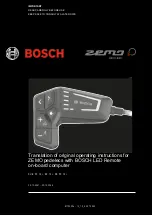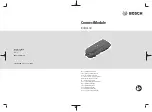
I. First
NOTE:
We strongly urge you to read this Manual in its entirety
before
your first
ride; at the very least, read and make sure that you understand each point
in this section, and refer to the cited sections on any issue which you don’t
completely understand.
A. Bike Fit
1.
Is your bike the right size? To check, see Section III.A. If your
bicycle is too large or too small for you, you may lose control and
fall. If your new bike is not the right size, ask your dealer to
exchange it before you ride it.
2. Is the saddle at the right height? To check, see Section III.B. If you
adjust your saddle height, make sure that you follow the Mini-
mum Insertion instructions in Section III.B.
3.
Are saddle and seatpost securely clamped? A correctly tightened
saddle will allow no saddle movement in any direction. See
Section III.B. for details.
4.
Are the stem and handlebars at the right height for you? If not, see
Section III.C. on what you can do about it.
5.
Can you comfortably operate the brakes? If not, you may be able
to adjust their angle and reach. See Section III.D. and III.E. for
details.
6.
Do you fully understand how to operate your new bicycle? If not,
before
your first ride, have your dealer explain any functions or
features which you do not understand.
B. Safety First
1.
Always wear an approved helmet when riding your bike, and
follow the helmet manufacturer’s instructions for fit, use and care
of your helmet.
2.
Do you have all the other required and recommended safety
equipment? See Section II. It’s your responsibility to familiarize
yourself with the laws of the areas where you ride, and to comply
with all applicable laws.
3.
Do you know how to correctly operate your wheel quick releases?
Check Section IV.A.1. to make sure. Riding with an improperly
adjusted wheel quick release can cause the wheel to wobble or
disengage from the bicycle, and cause serious injury or death.
4.
If your bike has toeclips and straps or clipless (“step-in”) pedals,
make sure you know how they work (see Section IV.E.). These
pedals require special techniques and skills. Follow the pedal
manufacturer’s instructions for use, adjustment and care.
5.
Does your bike have suspension? If so, check Section IV. F. Suspen-
sion can change the way a bicycle performs. Follow the suspension
manufacturer’s instructions for use, adjustment and care.
6.
Do you have “toe overlap”? On smaller framed bicycles your toe
or toeclip may be able to contact the front wheel when a pedal is all
the way forward and the wheel is turned. See section IV.E.
4
SECTION: I First
SECTION: IV Tech / SECTION: V Service
29
2. Ask your dealer to recommend a book on bicycle repair.
3. Ask your dealer about availability of bicycle repair courses in your
area.
Regardless of which option you select, we recommend that you ask your dealer to
check the quality of your work the first time you work on something and before you
ride the bike, just to make sure that you did everything correctly. Since that will
require the time of a mechanic, there may be a modest charge for this service.
A. Service Intervals
Some service and maintenance can and should be performed by the owner,
and require no special tools or knowledge beyond what is presented in this
manual.
The following are examples of the type of service you should perform
yourself. All other service, maintenance and repair should be performed in
a properly equipped facility by a qualified bicycle mechanic using the
correct tools and procedures specified by the manufacturer.
1.
Break-in Period:
Your bike will last longer and work better if you
break it in before riding it hard. Control cables and wheel spokes may
stretch or “seat” when a new bike is first used and may require
readjustment by your dealer. Your Mechanical Safety Check (Section
I.C) will help you identify some things that need readjustment. But
even if everything seems fine to you, it’s best to take your bike back
to the dealer for a checkup. Dealers typically suggest you bring the
bike in for a 30 day checkup. Another way to judge when it’s time for
the first checkup is to bring the bike in after three to five hours of hard
off-road use, or about 10 to 15 hours of on-road or more casual off-
road use. But if you think something is wrong with the bike, take it
to your dealer before riding it again.
2.
Before every ride: Mechanical Safety Check
(see Section I.C.)
3.
After every long or hard ride:
If the bike has been exposed to water
or grit; or at least every 100 miles: Clean the bike and lightly oil the
chain. Wipe off excess oil. Lubrication choices are determined by
climate. Talk to your dealer about the best lubricants and the recom-
mended lubrication frequency for your area.
4.
After every long or hard ride or after every 10 to 20 hours of riding:
•
Squeeze the front brake and rock the bike forward and back.
•
Everything feel solid? If you feel a clunk with each forward or
backward movement of the bike, you probably have a loose
headset. Have your dealer check it.
•
Lift the front wheel off the ground and swing it from side to
side. Feel smooth? If you feel any binding or roughness in the
steering, you may have a tight headset. Have your dealer
check it.
• Grab one pedal and rock it toward and away from the centerline
of the bike; then do the same with the other pedal. Anything


































